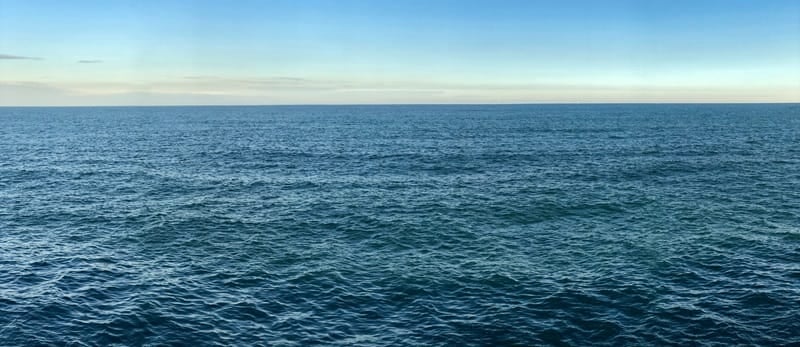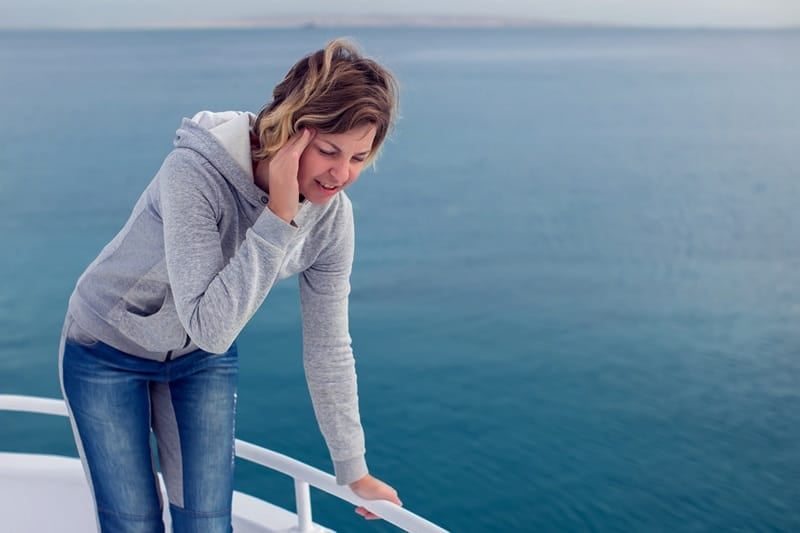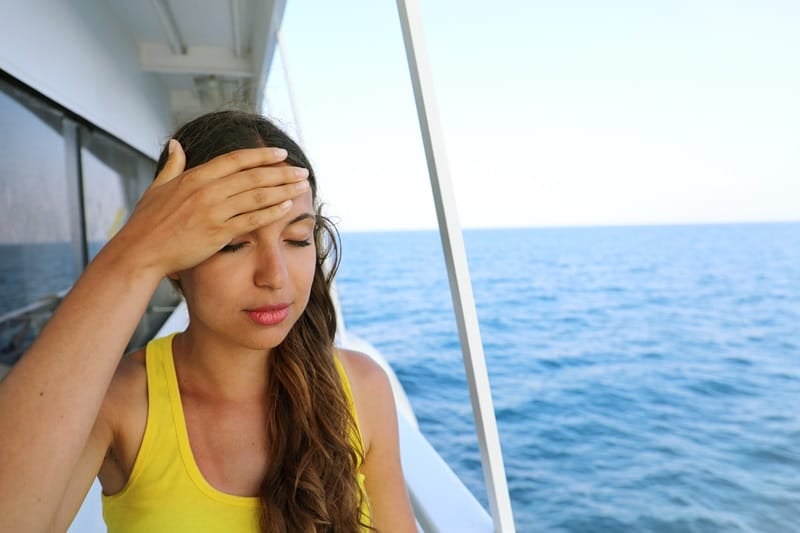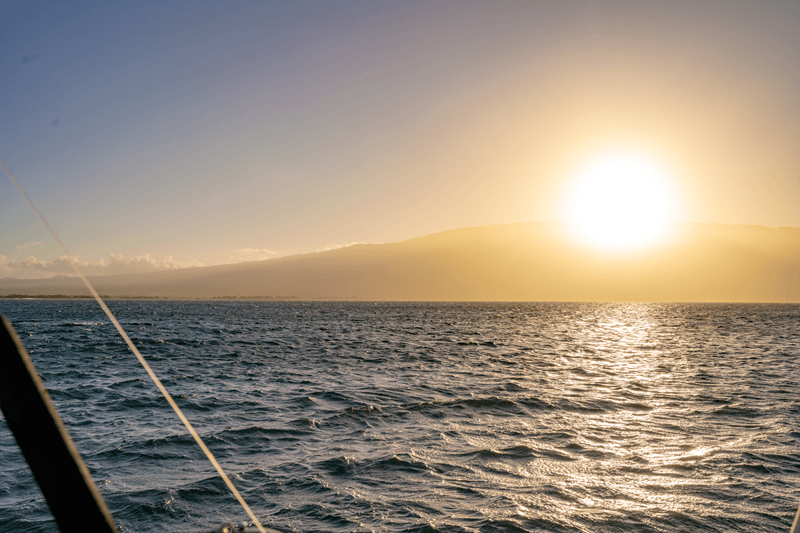Schnorcheln Maui
Dive into Maui’s stunning snorkeling spots and experience vibrant coral reefs, colorful tropical fish, and majestic sea turtles. From Molokini Crater to Turtle Town, every adventure offers unforgettable views beneath the waves. Book your Maui Snorkeling Tour now and make your Hawaiian dreams a reality! 🌊🐢
Seasickness is a common and often dreaded condition that can turn an enjoyable day on the water into an uncomfortable and disorienting experience. For many, it’s a temporary inconvenience; for others, it’s a recurring problem that requires careful management. In this blog, we’ll dive into what seasickness is, its causes, how to prevent it, and tips for a speedy recovery!
What is Seasickness?
Seasickness, also known as motion sickness, is a common condition triggered by a mismatch between your body’s perception of movement and what your eyes see. When you’re on a boat, your inner ear senses the motion of the waves, but your eyes may see a relatively stable environment (like the interior of a cabin). This sensory conflict sends confusing signals to your brain, leading to a variety of unpleasant symptoms, including:
-
- Nausea and vomiting – The most common and recognizable symptoms.
- Dizziness and lightheadedness – A spinning sensation or feeling off-balance.
- Disorientation: Feeling confused or unable to focus.
- Sweating – Cold sweats often accompany nausea.
- Fatigue and drowsiness – A sense of lethargy or exhaustion.
- Pallor – A noticeable paleness of the skin.
While anyone can experience seasickness, some individuals are more susceptible than others. Factors such as age (children and pregnant women are more prone), inner ear disorders, migraines, and anxiety can increase your risk.
Why Does it Happen?
To understand seasickness, let’s dive deeper into the science behind it. Our bodies maintain balance and spatial orientation through a complex interplay of sensory input from:
1. Inner ear (vestibular system): Detects motion, gravity, and head position.
2. Eyes (visual system): Provide information about your surroundings and movement.
3. Proprioceptors: Sensors in muscles and joints that tell your brain where your body is in space.
When these systems send conflicting signals, your brain struggles to reconcile the information. This sensory mismatch is believed to trigger the release of stress hormones and neurotransmitters, leading to the symptoms of seasickness.
When these systems send conflicting messages to the brain, it struggles to reconcile the information, resulting in nausea and other symptoms.
Several factors can increase the likelihood of seasickness:
-
- Rough seas: Large waves and intense rocking increase disorientation.
- Lack of experience: First-time or infrequent sailors are more prone.
- Reading or focusing on close objects: Prevents the brain from aligning motion cues.
- Fatigue and dehydration: Lower resilience to motion stress.
- Sensitivity: Some individuals are naturally more prone to motion sickness.
Prevention Is Key
Preventing seasickness begins with preparation and understanding your triggers. Here are proven strategies to keep the queasiness at bay:
1. Choose the Right Spot on the Boat
-
- When on the Lani Kai II, sitting on the back of the boat is best.
- On larger vessels, position yourself on the top deck for fresh air and a clear horizon view.
2. Keep Your Eyes on the Horizon
Looking at the horizon helps your brain reconcile the movement it feels with what your eyes see, reducing sensory conflict.
3. Avoid Triggers
-
- Skip heavy meals: Avoid greasy, spicy, or acidic foods before heading out.
- Limit alcohol and caffeine: These can dehydrate you and lower your resilience.
- Avoid strong odors: The smell of fuel, perfume, or food can exacerbate nausea.
4. Use Medications
Several over-the-counter and prescription medications can prevent or reduce symptoms:
-
- Dramamine (Dimenhydrinate): Effective for mild symptoms; can cause drowsiness.
- Bonine (Meclizine): A less-drowsy alternative.
- Scopolamine patches: Worn behind the ear, they release medication slowly over several days.
- Ginger supplements: A natural remedy for nausea.
5. Try Acupressure Bands
Acupressure wristbands, like Sea-Bands, apply gentle pressure to the P6 (Neiguan) acupressure point on your wrist, which can help alleviate nausea.
6. Stay Hydrated and Rested
Start your trip well-rested and hydrated. Fatigue and dehydration can amplify symptoms.
7. Build Tolerance
Spending more time on the water can help desensitize your body to the motion over time.
Schnorcheln im Molokini-Krater
Discover the vibrant underwater world of Molokini Crater, a snorkeling paradise with crystal-clear waters and abundant marine life. Swim alongside tropical fish, marvel at coral reefs, and immerse yourself in Hawaii’s natural beauty. Don’t miss this unforgettable adventure! 🌊🐠
Tips for Recovery
If seasickness sets in despite your best efforts, these recovery tips can help you bounce back quickly:
1. Change Your Focus
-
- Go outside: Fresh air and open views are your allies.
- Fix your gaze on the horizon: This helps recalibrate your sensory inputs.
2. Lie Down
Lying down, especially with your eyes closed, can help stabilize your inner ear and reduce the sensation of motion.
3. Cool Down
-
- Splash your face with cold water or use a cool compress.
- Stay in the shade to avoid overheating.
4. Sip Fluids
Drink small amounts of water, ginger ale, or an electrolyte solution to rehydrate. Avoid large gulps, which can upset your stomach further.
5. Eat Lightly
If you feel hungry, opt for bland foods like crackers or dry toast, which are easier to digest.
6. Use Aromatherapy
Essential oils such as peppermint, lavender, or ginger can have soothing effects. A few drops on a handkerchief or your wrists can help ease symptoms.
7. Distract Yourself
Engaging in light, enjoyable activities like listening to music or chatting with others can shift your focus away from the discomfort.
Seasickness and Special Populations
Children
Children are often more susceptible to seasickness. Use kid-friendly remedies like ginger chews or acupressure bands, and avoid over-the-counter medications unless directed by a doctor.
Pregnant Individuals
Pregnancy increases sensitivity to nausea. Stick to natural remedies like ginger and acupressure. Consult a healthcare provider before using any medications.
Elderly Adults
Older individuals may be more prone to dehydration and medication side effects. Choose remedies carefully and ensure adequate hydration.
Beyond the Horizon: A Note on Mal de Debarquement
In rare cases, the sensation of rocking or swaying can persist even after returning to land. This condition, known as Mal de Debarquement (MdDS), can last for months or even years. While the exact cause is unknown, it’s believed to be related to the brain’s adaptation to the motion of the sea. If you experience persistent symptoms after a sea voyage, consult a medical professional.
Embracing the Sea Without Fear
Seasickness can feel daunting, but it doesn’t have to deter you from enjoying the ocean. With the right preventive measures, you can significantly reduce your chances of being affected. And if symptoms arise, knowing how to recover effectively can make all the difference.
So, whether you’re embarking on a luxurious cruise, a thrilling Maui-Schnorcheltour, or a peaceful fishing trip, equip yourself with these tips to keep your experience smooth and enjoyable. The ocean awaits—don’t let seasickness hold you back!




